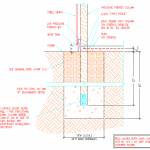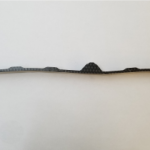This week the Pole Barn Guru answers reader questions about our “best guess at price per square…” for a Hansen Building Kit, spacing for scissor trusses, and if there is a national code for post spacing in a barndominium.
 DEAR POLE BARN GURU: What is your best guess at price per square foot range materials and labor to build a Hanson Pole Building these days? STEVE in MAPLE PLAIN
DEAR POLE BARN GURU: What is your best guess at price per square foot range materials and labor to build a Hanson Pole Building these days? STEVE in MAPLE PLAIN
DEAR STEVE: All Hansen Pole Buildings kits are 100% custom designed to best meet wants and needs of our clients, as such – we do not price per square foot, but rather by actual dimensions and features, taking into account climactic conditions at each individual building site (snow load, design wind speed and wind exposure). While most of our clients are doing DIY, largely due to a lack of quality building erectors, fair market value for labor is typically roughly 50% of what your building kit investment is (not including any concrete).
DEAR POLE BARN GURU: I’m hoping you can give me some advice. A pole building 30 wide with scissor trusses pitched at 10/12 out 5/12 inside closed cell insulation finished on the inside with 1″x8″ pine run horizontal ….will spacing the trusses on 4′ centers be alright? The building is in central Iowa zip code 51537.
Thank You so much!! JOHN in HARLAN
 DEAR JOHN: These trusses may or may not be adequate for your needs, depending upon loads and spacing they were designed for.
DEAR JOHN: These trusses may or may not be adequate for your needs, depending upon loads and spacing they were designed for.
The engineer who sealed your building plans is responsible (by Code) to review your truss drawings to ensure they comply with his or her design specifications as outlined on their plans. They also are to create a permanent bracing plan to satisfy all needed truss and building needs. This bracing plan must be shown on these same plans.
A caution, steeply sloped trusses impart a large horizontal wind load and building sidewall columns must be appropriately analyzed to insure structural adequacy. Columns specific to a 4/12 roof slope, may not be strong enough to carry these added loads. Again, your engineer can (and should) confirm.
DEAR POLE BAR NGURU: Hi, Barndominiums, is there a national code about how far apart the poles should be? 10 ‘ or 8′? Here in Kentucky, I’m under the impression that the poles have to be 8’ apart. Am I correct? Regards DAN in MURRAY
 DEAR DAN: You would be incorrect. Poles (actually columns) are inanimate objects and can be spaced at whatever distance their size and grade is capable of supporting using sound engineering practice. Our engineers recently designed a building for one of our clients with columns every 18′ and many years ago, I did one with columns spaced 24 feet on center. In most instances (depending upon climactic loads and door/window locations) columns every 12 feet are most economical.
DEAR DAN: You would be incorrect. Poles (actually columns) are inanimate objects and can be spaced at whatever distance their size and grade is capable of supporting using sound engineering practice. Our engineers recently designed a building for one of our clients with columns every 18′ and many years ago, I did one with columns spaced 24 feet on center. In most instances (depending upon climactic loads and door/window locations) columns every 12 feet are most economical.
 DEAR RALPH: In a typical fully engineered post frame (pole) building isolated columns embedded into your ground would be complying and meet Building Code requirements. We would like to see your jurisdiction’s written requirement for mandating a continuous foundation, as often times these ‘requirements’ are just one person’s own feelings of how things should be done, rather than having an actual basis.
DEAR RALPH: In a typical fully engineered post frame (pole) building isolated columns embedded into your ground would be complying and meet Building Code requirements. We would like to see your jurisdiction’s written requirement for mandating a continuous foundation, as often times these ‘requirements’ are just one person’s own feelings of how things should be done, rather than having an actual basis. DEAR BRIAN: Regardless of spacing of columns or trusses, a fully engineered post frame building will be designed to meet or exceed a specified set of wind design criteria – speed and exposure. You are better served to increase design wind sped, so your entire buildings is capable of supporting higher loads, than to merely move columns closer together. Provided Code required deflection limitations have been properly engineered for, any purlin sag, over time, should be relatively imperceptible.
DEAR BRIAN: Regardless of spacing of columns or trusses, a fully engineered post frame building will be designed to meet or exceed a specified set of wind design criteria – speed and exposure. You are better served to increase design wind sped, so your entire buildings is capable of supporting higher loads, than to merely move columns closer together. Provided Code required deflection limitations have been properly engineered for, any purlin sag, over time, should be relatively imperceptible. DEAR SHERRY: Properly manufactured inside closure strips are UV resistant and should outlive your building’s steel roofing. Personally, I find them essential, as without them small flying critters have a clear path to enter your building. In order to replace them, you will have to remove screws along your eave line. Once remains of old closures are removed, new ones can be put in place. Old screws should be replaced by both larger diameter and longer screws, to maintain integrity of connections and prevent leaks.
DEAR SHERRY: Properly manufactured inside closure strips are UV resistant and should outlive your building’s steel roofing. Personally, I find them essential, as without them small flying critters have a clear path to enter your building. In order to replace them, you will have to remove screws along your eave line. Once remains of old closures are removed, new ones can be put in place. Old screws should be replaced by both larger diameter and longer screws, to maintain integrity of connections and prevent leaks.





